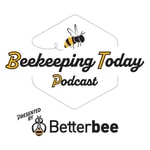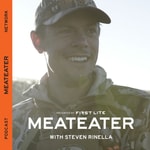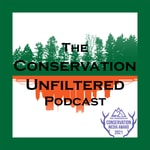projectupland.com On The Go – Details, episodes & analysis
Podcast details
Technical and general information from the podcast's RSS feed.

projectupland.com On The Go
Project Upland Magazine
Frequency: 1 episode/3d. Total Eps: 411

Recent rankings
Latest chart positions across Apple Podcasts and Spotify rankings.
Apple Podcasts
🇨🇦 Canada - wilderness
06/07/2025#95🇨🇦 Canada - wilderness
05/07/2025#77🇨🇦 Canada - wilderness
13/06/2025#99🇨🇦 Canada - wilderness
12/06/2025#95🇨🇦 Canada - wilderness
11/06/2025#58🇨🇦 Canada - wilderness
10/06/2025#40🇨🇦 Canada - wilderness
30/05/2025#81🇨🇦 Canada - wilderness
29/05/2025#50🇬🇧 Great Britain - wilderness
09/05/2025#95🇬🇧 Great Britain - wilderness
08/05/2025#89
Spotify
No recent rankings available
Shared links between episodes and podcasts
Links found in episode descriptions and other podcasts that share them.
See all- https://amzn.to/46yJ3SZ
2 shares
- https://amzn.to/3REKevI
2 shares
RSS feed quality and score
Technical evaluation of the podcast's RSS feed quality and structure.
See allScore global : 48%
Publication history
Monthly episode publishing history over the past years.
Guide to Hunting Clapper Rails
mardi 27 août 2024 • Duration 15:33
Clapper rails don’t sing. They cackle. It’s a guttural call emanating from somewhere deep within each tiny bird that reverberates with enough force to trigger a cascade. Once one rail calls, every rail within earshot erupts into its own chorus. The cacophony sends a ripple through the salt marsh and shatters its peaceful silence like glass.
Today, however, there is no peace, and there is no silence. It’s already been shattered. A violent collision of arctic air and Gulf Stream winds just smacked the mid-Atlantic shore. Now, the rails and I are caught knee-deep in the chaos.
Six Famous Hunting Dogs in History
mardi 20 août 2024 • Duration 16:21
To bird dog aficionados, names like Elhew Snakefoot, Count Noble, Shadowoaks Bo, and Manitoba Rap are well known. But to the average person, the names of dogs in our hall of fame mean absolutely nothing at all.
But there are a few dogs from hunting breeds that have achieved fame beyond the bird dog world. Let’s have a look at some of the most celebrated among them.
A Guide to Choosing the Right Load For a Classic Shotgun
mardi 9 juillet 2024 • Duration 10:53
Vintage shotguns can be particular with the kinds of shotgun shells you put through them. In a world filled with high-velocity, heavy payload shells, the difficulty of finding lighter loads can take away some of the allure of owning a classic. But it shouldn’t stop you. There’s something warm and cozy about hunting with a 50-, 75-, or even 100-year-old shotgun.
Only a handful of ammunition manufacturers really make loads like they used to. With the right load, classic guns can work just as well, if not better, than some modern guns today. Whether you’re considering buying one or you’ve inherited an old shotgun from a family member, it’s important to shoot the right shells through it so it will keep working for the next generation.
Edward Laverack: the Father of the English Setter
mardi 2 juillet 2024 • Duration 18:13
“Suddenly into the middle of the coterie of breeders a bombshell was flung, so startling as to cause a violent upheaval of all the old theories, and a complete revolution in setter breeding, the effects of which have lasted to the present day.” —Walter Baxendale
Walter Baxendale’s “bombshell” was a man named Edward Laverack, now universally regarded as the father of the modern English Setter. Little is known about his early life, but as a young man, Laverack was apparently a shoemaker’s apprentice, but where he worked and for whom is not clear. According to Robert Armstrong in All Setters, Laverack “spent his youth in Hawick, a town in the Southern Uplands of Scotland, but at the age of 17, not liking it after he had been there some time, he ran away.”
New CDC Dog Import Rules Will Affect Border Crossings and Air Travel
dimanche 30 juin 2024 • Duration 11:17
In May of 2024, the U.S. Centers for Disease Control and Prevention (CDC) announced new rules governing dog imports into the United States. The rules are aimed at standardizing the process between countries and preventing the introduction of canine rabies into the U.S., but the broad-sweeping changes will have lasting impacts on breed clubs that depend on imported puppies for genetic diversity as well as dog owners who regularly cross international borders—including Canada.
The CDC differentiates between countries considered to be high-risk for rabies and those that are low-risk or rabies-free. Currently, the rules and requirements for importing dogs from high-risk countries are much stricter than they are for dogs coming from low-risk or rabies-free countries. Starting August 1, however, the rules will be broadened to essentially apply the high-risk protocols to every foreign country regardless of their rabies risk status.
Are Pinyon Jays the Next Sage Grouse?
lundi 24 juin 2024 • Duration 15:26
I can’t help but stare through the conference room’s glass curtain wall, in awe of some of the world’s most productive wetlands on Earth. This morning, the frozen wetlands are blanketed in snow after this winter’s biggest storms pounded the area, which is great for recharging those wetlands later in the year. During spring, summer, and fall, these Great Salt Lake wetlands are so valuable, that they’ve been recognized as being globally important and critical habitat for millions of waterfowl and shorebirds.
But we aren’t here to talk about wetlands or shorebirds. It’s the sagebrush landscapes beyond the Bear River Delta that this group of researchers, biologists, and ecologists are discussing. As I watch a meadowlark hide under snow-laden cattails, my attention snaps back to the conference room when I hear, “Pinyon jays are where greater sage-grouse were 30 years ago.”
English Springer Spaniel: Breed Characteristics, Abilities, and History
lundi 17 juin 2024 • Duration 13:06
My first-ever interaction with an English Springer Spaniel was when my wife, Emily, brought one home. When considering which dog breed our first hunting dog should be, we ultimately landed on the one with which Emily was most familiar. She grew up with Springers, and consequently, that is where we landed. At that time, we weren’t aware of the differences between bench and field bred dogs. Perhaps unsurprisingly, as our involvement in bird hunting deepened, so did our knowledge of the breed.
Our first dog, Dixie, was most likely a bench bred dog. Bench bred dogs are those who are bred with the goal of placing in the show ring. I say most likely because she came from an inconspicuous farm litter but was physically more similar to a bench dog (we’ll get into that in a bit).
As Dixie got older, we got on a list for a field bred Springer Spaniel. These dogs are bred with the rigors of field trials and hunt tests in mind; hence the term field bred. Our first field bred dog, Timber, died from a gastrointestinal fungal infection before her second birthday. At that point, we got Fern. Then, roughly a year later, Wild, who has the same mother as Timber, joined our family.
How to Correctly Command Your Dog
vendredi 14 juin 2024 • Duration 11:47
“Where were you last night?”
These words strike fear in nearly all adolescent children. Is the parent simply curious? Was it an ambivalent conversation starter or a knowing and accusatory set up? The answer always lies within the subtle tones, expression, and body language of the parent.
The same is true when thinking about the delivery of a command in dog training. It is very important to be cognizant of how we present information to our dogs because they, too, are always studying what we are saying. Know that you can’t hide your emotions within a command, no matter how hard you try. Always try to remain clear, calm, consistent, and absolute when commanding.
Introduction to Force Fetch for Pointing Dogs
vendredi 14 juin 2024 • Duration 13:33
It’s not quite U.S. domestic politics or dog food, but raise the topic of “force fetch” or its euphemism, “trained retrieve,” and you’ll quickly discover that pointing dog folks have lots of feelings about it. You’ll generally find four camps: a camp of those who say they don’t need it because they don’t need their dog to retrieve but only help them find a downed bird; a “natural retrieve” camp of folks who abhor the idea and claim you don’t need to do it with a good bird dog; a camp of those who say you can’t finish a great bird dog without it and attribute to it all sorts of benefits for the handler/canine relationship; and finally a camp of those who are confused by the divide between the proponents and detractors and aren’t really sure what force fetch is. I’ll confess I’ve spent at least a little time in each of those camps before settling in as a converted proponent of force fetch, and though sometimes I need to check my evangelistic zeal and admit it might not be necessary nor even desirable for every pointing dog / handler combo, I can speak to the positive experience I’ve had with it in training Lincoln. Here I’ll make the proponent’s case for anyone who might be considering employing it with their pointing dog.
What Is An English “Best Gun?”
mardi 11 juin 2024 • Duration 08:46
Having dealt with so-called “fine” firearms for decades, the question “What exactly is a ‘best gun?’” comes up a lot. Explaining what a best gun is can be challenging because it’s more of a concept or ethos to building a gun, not something that follows a set of rules or criteria. As such, the term is used quite liberally, especially when it comes to shotguns. Moreover, best quality shotguns made by English gunmakers are rare by any measure, giving them an almost mythical status. This makes the term “best quality” even more abstract.









